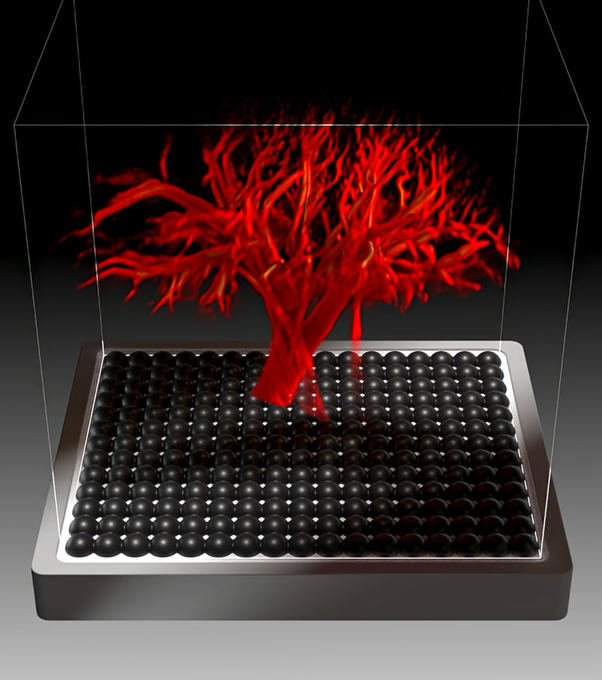This post is also available in:
 עברית (Hebrew)
עברית (Hebrew)
Researchers in France have developed an advanced ultrasound technique capable of visualizing blood flow throughout entire organs in four dimensions — three spatial dimensions plus time — providing an unprecedented level of detail.
The technology, created by a team at Inserm’s Physics for Medicine Institute (Inserm/ESPCI Paris-PSL/CNRS), allows scientists and clinicians to observe both large vessels and microcirculation in a single scan. Current imaging methods cannot capture the full circulatory network of an organ, making this a significant step forward for cardiovascular and organ health research.
The team demonstrated the technique in animal models comparable in size to humans. Their 4D imaging could map blood flow in the heart, liver, and kidneys, capturing vessels smaller than 100 micrometers. In the liver, for example, the technology differentiated between arterial, venous, and portal networks and analyzed their unique flow patterns.
“The originality of these results lies in the ability to visualize the vessels of an entire organ at very small scales,” said Clément Papadacci, lead author of the study. “This level of resolution, combined with dynamic observation, has never been achieved before.”
According to Interesting Engineering, the non-invasive probe connects to portable ultrasound equipment, suggesting a future where this imaging could be used directly in clinical settings. The high-resolution images allow for precise quantification of blood flow dynamics, offering new insights into microcirculation disorders that are difficult to detect with current methods.
Microcirculation, the network of tiny vessels that supply cells with oxygen and remove waste, is critical for organ function. Impairments can contribute to heart or kidney failure and other chronic conditions. By capturing the full vascular map in real time, the new technology could improve both diagnosis and treatment monitoring.
A video illustrating the 4D imaging system was released on October 28th, 2025, highlighting its capability to map entire organ vascular networks in action. The next step for the team is human clinical trials, with the aim of integrating this method into routine medical practice.
Papadacci believes the technology could become a standard tool for understanding vascular dynamics, providing clinicians with a comprehensive view of blood flow from major arteries down to the smallest arterioles.
The press release can be found here.


























